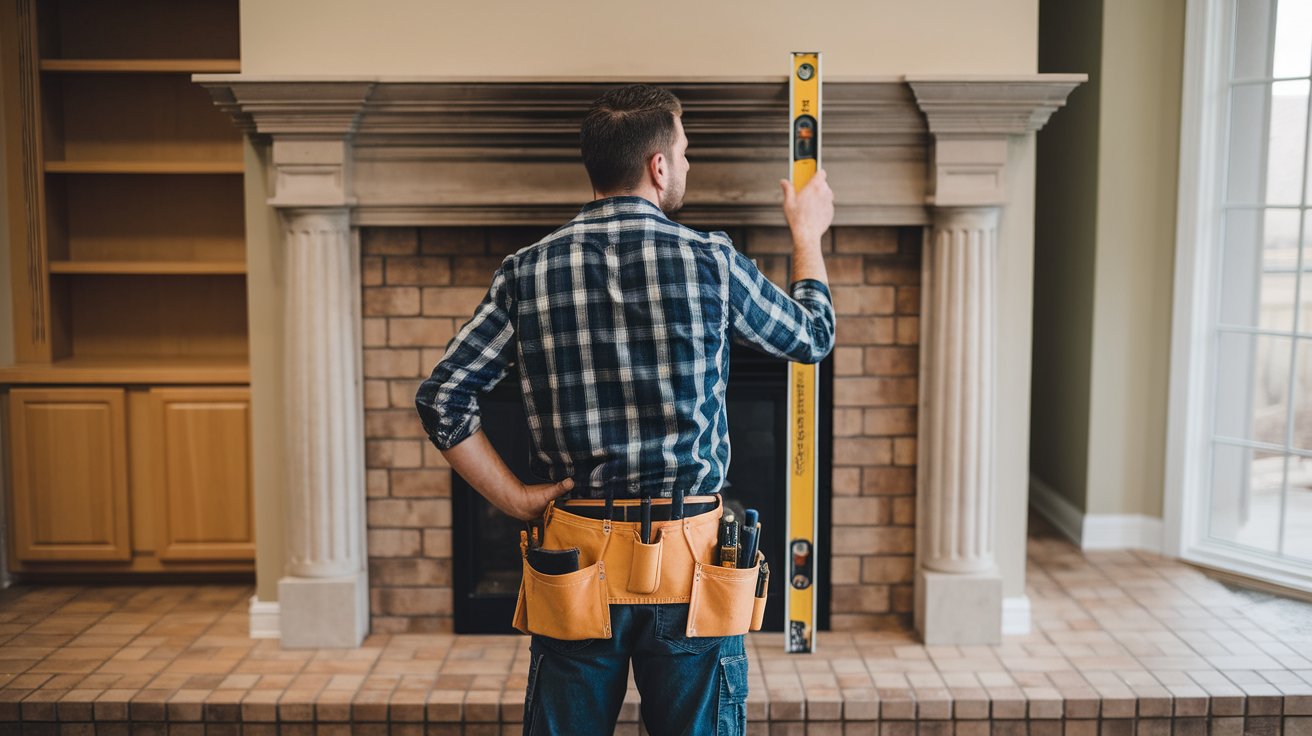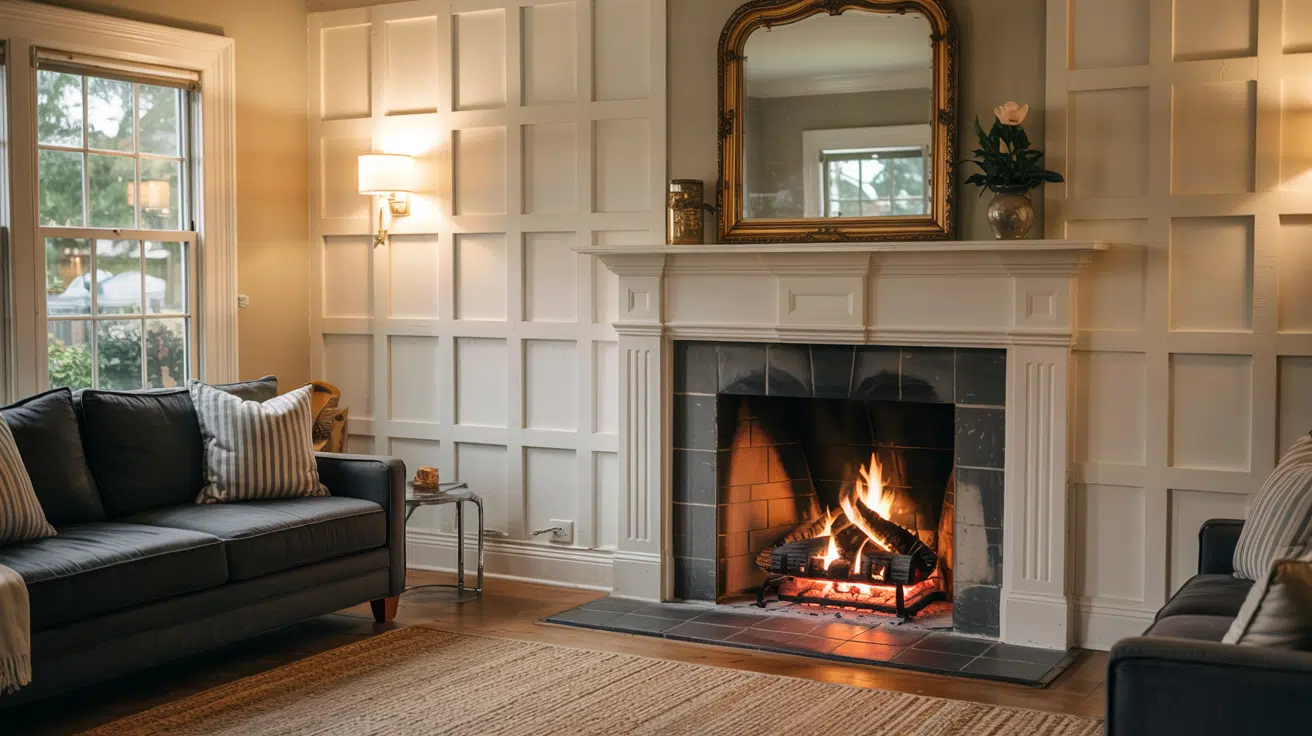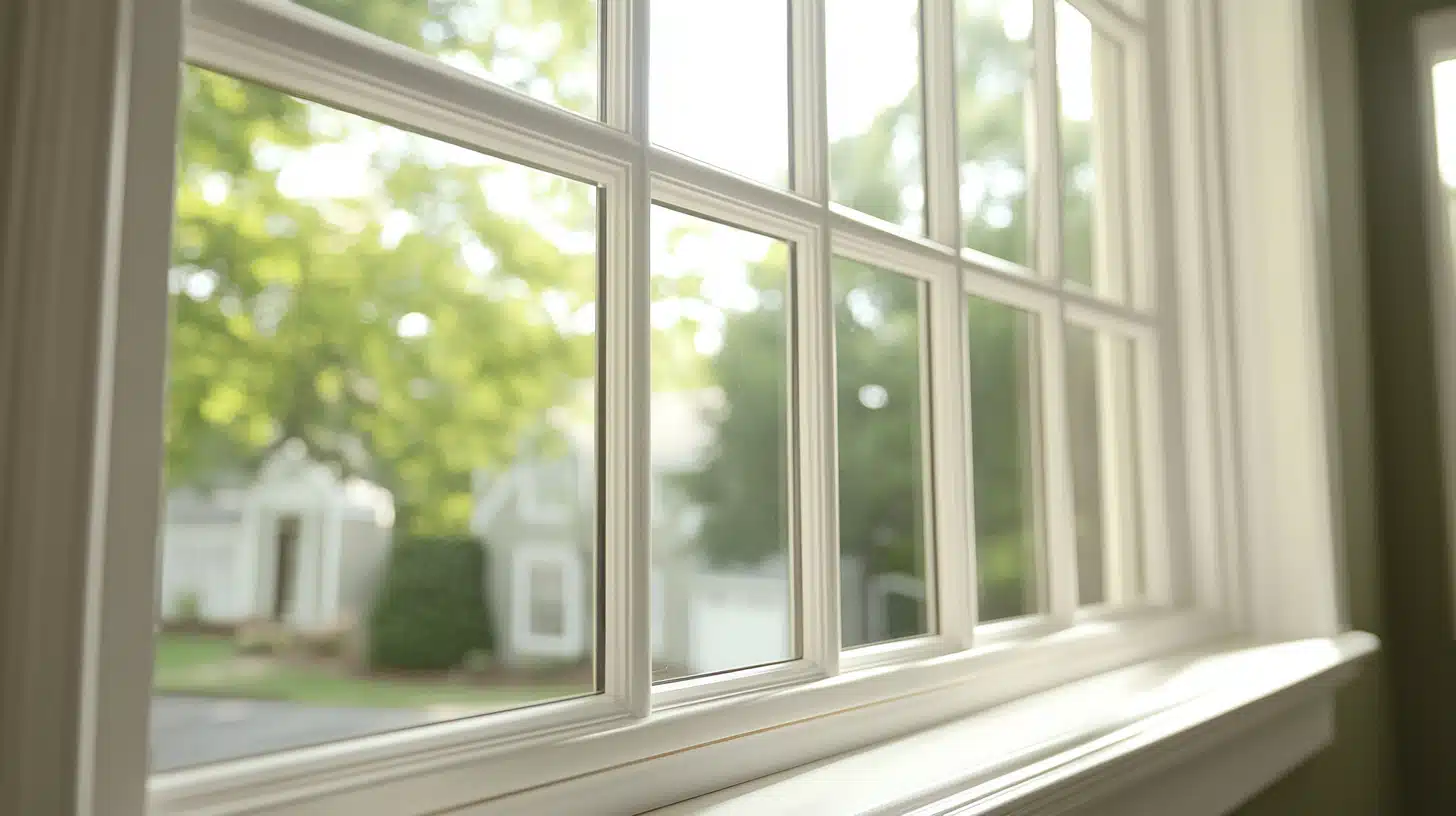Fireplace Installation Made Easy: Everything You Need to Know
Many homeowners dream of a cozy fireplace but find the installation process daunting. If you’ve hesitated to add this warm, inviting feature to your home, you’re not alone.
The good news is that fireplace installation can be simpler than you might think.
This guide will cover everything you need to know, from choosing the right type of fireplace to understanding the installation process.
We’ll cover the options available, key considerations for your home, and essential safety measures.
By the end of this article, you’ll have a clear understanding of fireplace installation and feel confident about taking the next steps.
Let’s jump in and turn your fireplace dreams into reality.
Choosing Your Fireplace
Choosing the right fireplace for your home involves understanding the available types and their requirements.
Let’s explore the three main categories: wood-burning, gas, and electric fireplaces.
1. Traditional Charm: Wood-Burning Fireplaces
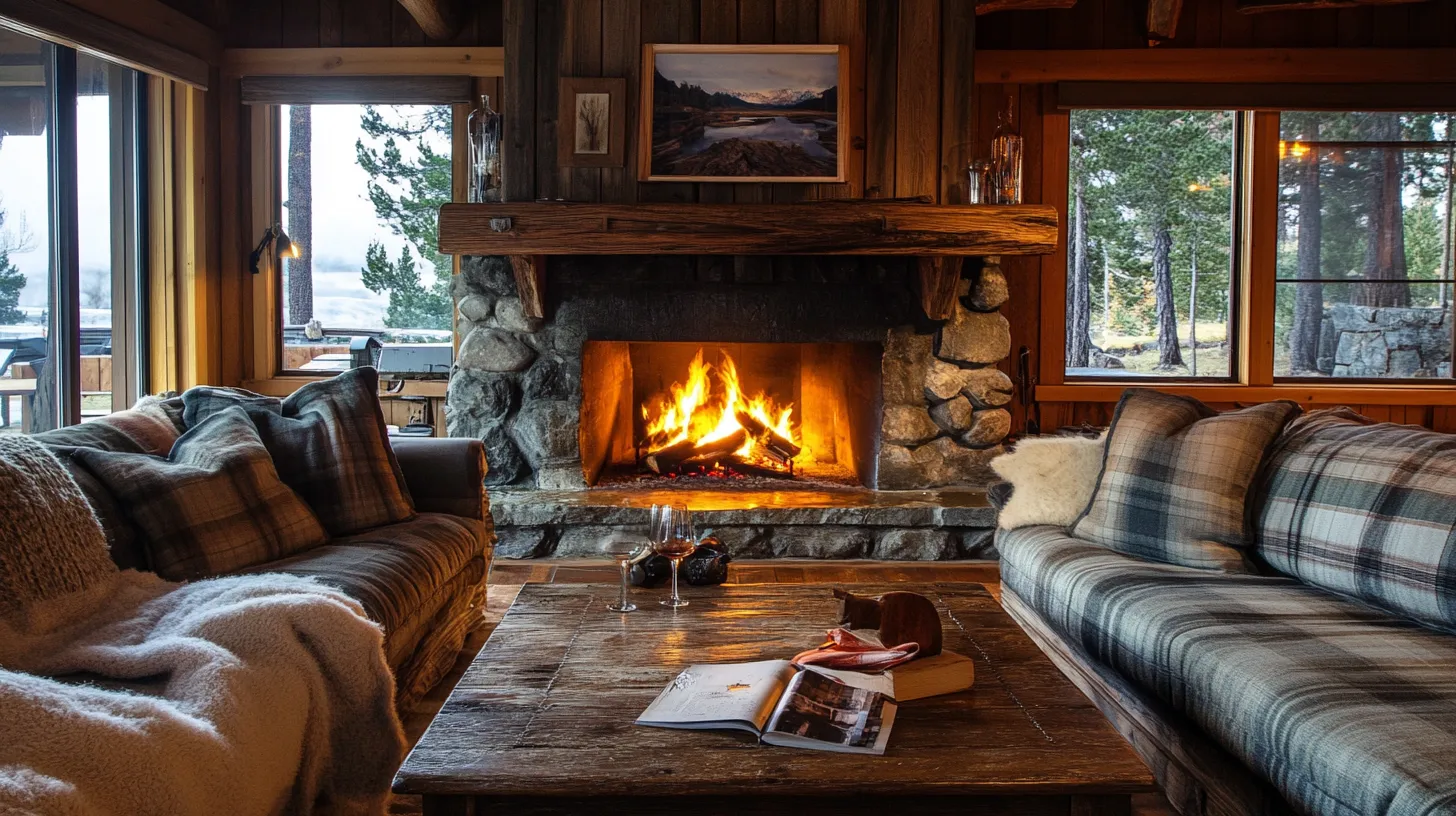
Wood-burning fireplaces offer a classic appeal with some unique considerations:
- Features: Provides warmth and a cozy atmosphere
- Key Components: Requires bricks, mortar, chimney liner, damper, and firebox
- Installation Overview:
- Check or install a chimney
- Set up the firebox
- Add chimney liner and damper
- Ensure proper airflow and safety standards
Remember that wood-burning fireplaces need regular upkeep and a steady supply of firewood.
2. Modern Convenience: Gas Fireplaces

Gas fireplaces combine efficiency with contemporary style.
- Advantages: Easy to use, clean-burning, and starts quickly
- Essential Parts: Needs a gas line, venting system, firebox, and ignition mechanism
- Setup Process:
- Have a professional install the gas line
- Choose and install a venting system
- Link the gas line to the fireplace
- Check for any leaks and confirm safety compliance
Gas fireplaces offer a good balance of warmth and low maintenance.
3. Hassle-Free Option: Electric Fireplaces
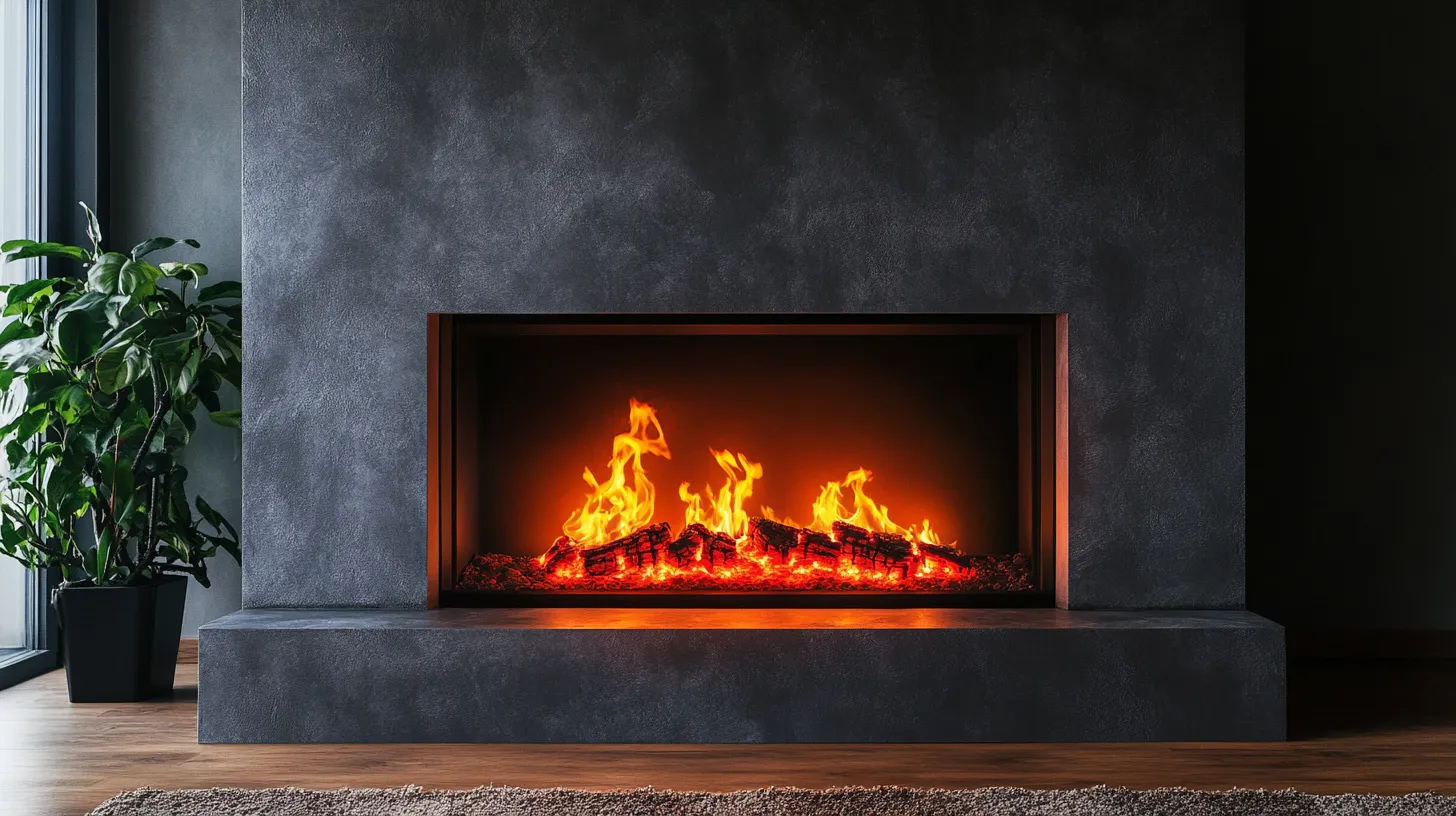
Electric fireplaces are the simplest to install:
- Key Benefit: No venting required; plug and use
- Installation Steps:
- Pick a spot near an electrical outlet
- Attach the unit securely
- Plug in and test
- Set up any extra features like remote control
Electric fireplaces are perfect for those wanting ambiance without major home modifications.
Initial Planning and Regulations
Before diving into fireplace installation, planning carefully and understanding the relevant regulations is crucial.
This ensures your new fireplace is safe, legal, and perfectly suited to your home.
Selecting the Right Fireplace for Your Home
When choosing a fireplace, consider these key factors:
- Home Layout: Evaluate your available space and room size. Some fireplaces require more room than others.
- Fuel Source: Weigh the pros and cons of wood, gas, and electric options. Each has different impacts on your home and lifestyle.
- Personal Preferences: Think about your desired ambiance, how often you’ll use the fireplace, and how much maintenance you’re willing to do.
Navigating Building Codes and Permits
Ensuring legal compliance is a vital step in fireplace installation:
- Local Regulations: Check your area’s building codes for specific fireplace restrictions and requirements.
- Necessary Permits: Obtain all required permits, especially if making structural changes or installing gas lines.
- Safety Standards: Adhere to clearances, ventilation, and fireproofing guidelines to ensure your installation is safe.
Preparation for Installation
Proper preparation is key to a smooth fireplace installation process.
This involves choosing the right location and preparing your home for the new addition.
Finding the Optimal Placement
Strategic positioning of your fireplace can enhance both its efficiency and your home’s aesthetics:
- Heat Distribution: Choose a spot allowing maximum heat spread throughout the room.
- Room Layout: Consider how the fireplace will fit with your existing furniture and decor.
- Visibility: Position the fireplace to serve as a focal point in the room.
Preparing Your Home
Before installation begins, you need to prepare the site:
- Structural Modifications:
- For wood-burning fireplaces: Ensure your chimney is stable and has proper clearance.
- For gas fireplaces: Prepare for venting system and gas line installation.
- For electric fireplaces: Check that your electrical system can handle the additional load.
- Safety Measures:
- Use fire-resistant materials around the fireplace area.
- If needed, reinforce your flooring to support the fireplace’s weight.
By thoroughly planning and preparing, you set the stage for a successful fireplace installation that will bring warmth and charm to your home for years.
Mastering Fireplace Installation: A Step-by-Step Guide
Installing a fireplace can be complex, but with the right knowledge and preparation, it can transform your living space.
Let’s explore the installation process for different types of fireplaces.
Installing Wood-Burning Fireplaces
Wood-burning fireplaces offer a traditional charm and require careful installation to ensure safety and efficiency.
1. Chimney Setup
Wood-burning fireplaces require a proper chimney for safe operation. Here’s what you need to know:
- Construct or inspect the existing chimney
- Install a flue liner for improved safety and efficiency
- Ensure the chimney is tall enough for effective draft
A well-constructed chimney is crucial for proper ventilation and preventing smoke buildup in your home.
2. Creating the Perfect Firebox
The firebox is where the magic happens. It’s the heart of your wood-burning fireplace and needs careful construction.
Follow these steps:
- Choose fire-resistant materials for construction
- Carefully assemble the firebox structure
- Install a damper to control airflow
- Ensure a proper seal to prevent smoke leakage
A properly built firebox will enhance the efficiency of your fireplace and contribute to its longevity.
Setting Up Gas Fireplaces
Gas fireplaces offer convenience and clean burning. Their installation requires attention to detail, especially regarding gas connections and venting.
1. Safe Gas Line Connection
Gas fireplaces require careful handling of gas lines to ensure safety:
- Always hire a certified professional for installation
- Choose between natural gas or propane
- Use approved materials and connectors to prevent leaks
Proper gas line installation is critical to avoid dangerous leaks and ensure your fireplace functions correctly.
2. Venting Options for Gas Fireplaces
Proper venting is crucial for gas fireplaces to remove combustion byproducts from your home:
- Direct vent systems: Ideal for homes without existing chimneys
- B-vent systems: Use indoor air for combustion
- Vent-free systems: Suitable for certain situations, but check local regulations
The right venting system depends on your home’s structure and local building codes.
3. Safety First: Essential Checks
Before using your gas fireplace, perform these safety checks:
- Test for gas leaks
- Verify proper ignition
- Ensure safety features like automatic shut-off valves are working
These checks are vital for the safe operation of your gas fireplace.
Electric Fireplace Installation Made Simple
Electric fireplaces are the easiest to install, requiring minimal structural changes to your home.
1. Plug and Play: Electrical Requirements
Electric fireplaces offer easy installation, but you still need to consider power needs:
- Ensure a dedicated circuit if required
- Check for the appropriate outlet type
Proper electrical setup ensures your electric fireplace operates safely and efficiently.
2. Securing Your Electric Fireplace
Follow these steps for a stable installation:
- Choose an appropriate location
- Mount or secure the unit, ensuring it’s level
- Safely conceal power cords
- Integrate the unit with your existing decor
A securely installed electric fireplace adds both safety and style to your room.
3. Fine-Tuning Your Electric Fireplace
Complete the setup with these final steps:
- Adjust flame settings for the desired ambiance
- Set heater output for comfort
- Configure additional features like remote controls or timers
These adjustments allow you to customize your electric fireplace to your preferences, creating the perfect atmosphere in your home.
Ensuring Proper Ventilation and Safety
Proper ventilation is crucial for the safe operation of any fireplace.
Let’s explore the various options and safety measures.
Choosing Venting Options
Different fireplaces require different venting systems. Understanding these options is key to a safe installation.
1. Chimney Systems
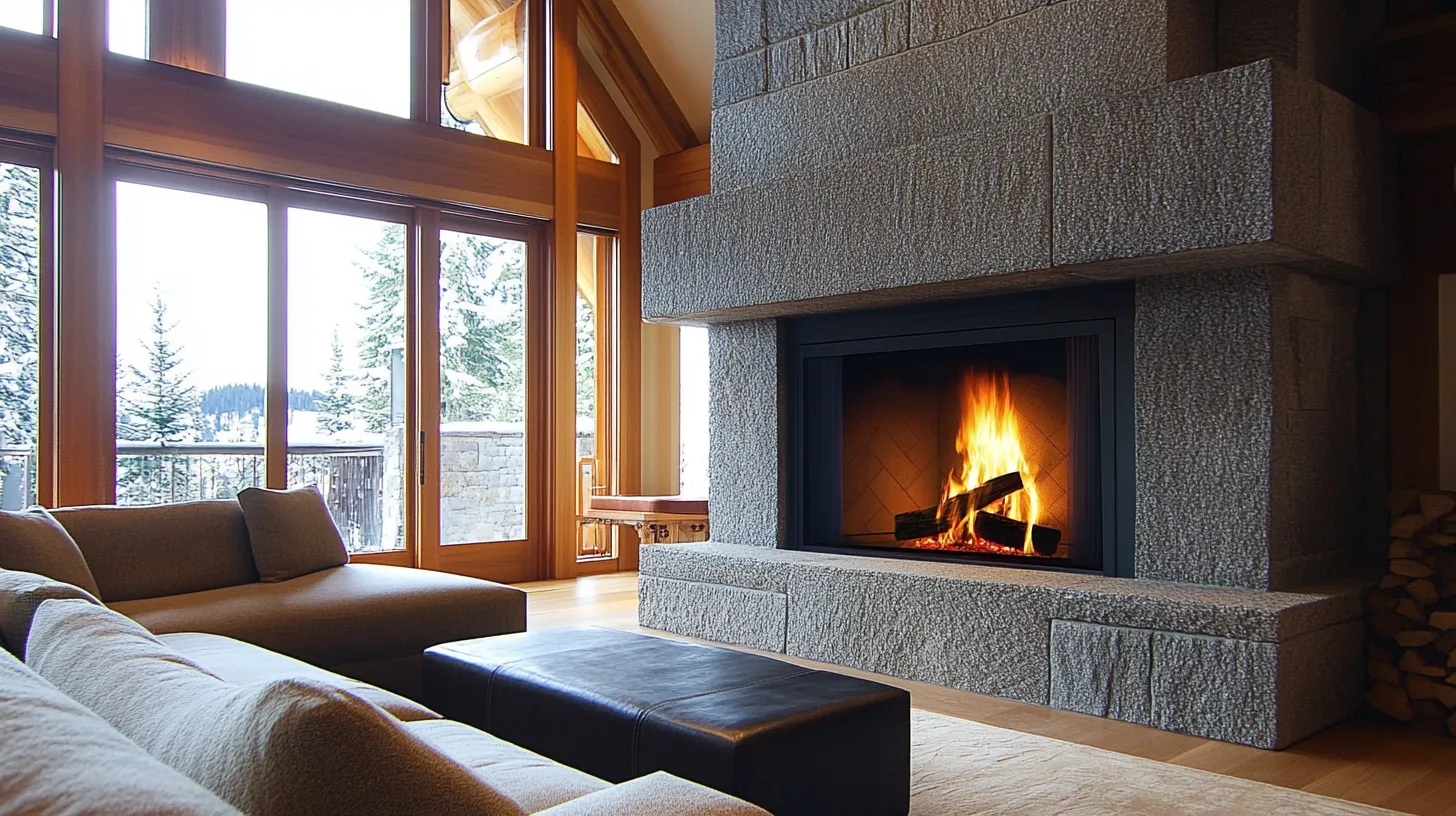
Traditional chimneys are still common for wood-burning and some gas fireplaces.
- Regular inspection is crucial to ensure structural integrity
- Cleaning helps prevent dangerous buildup of creosote
- Proper height and design promote effective draft
Maintaining your chimney system is essential for the safe operation of your fireplace.
2. Direct Vent Systems
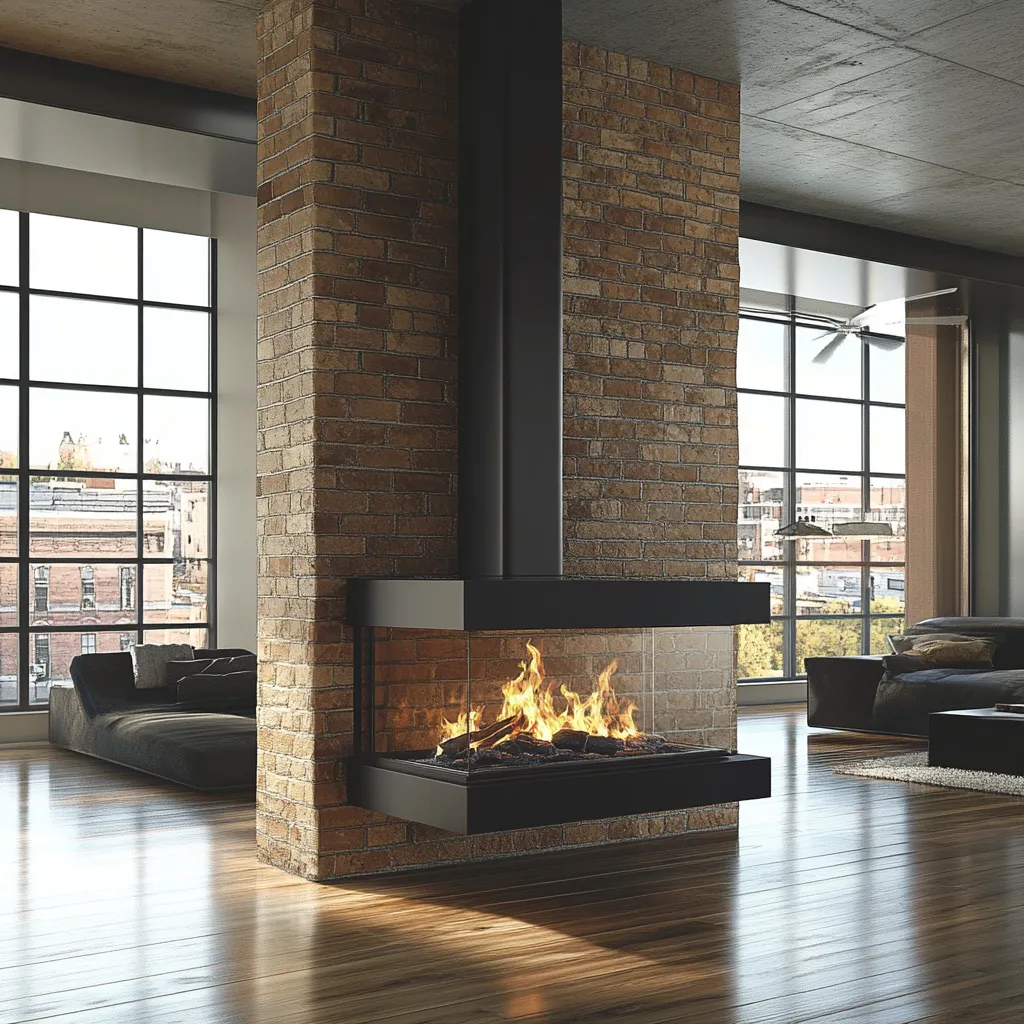
Direct vent systems are popular for gas fireplaces, offering installation flexibility.
- They draw air from outside for combustion
- Exhaust is vented directly outdoors
- It can be installed in homes without existing chimneys
These efficient systems can be a good option for homes without traditional chimneys.
3. Vent-Free Systems
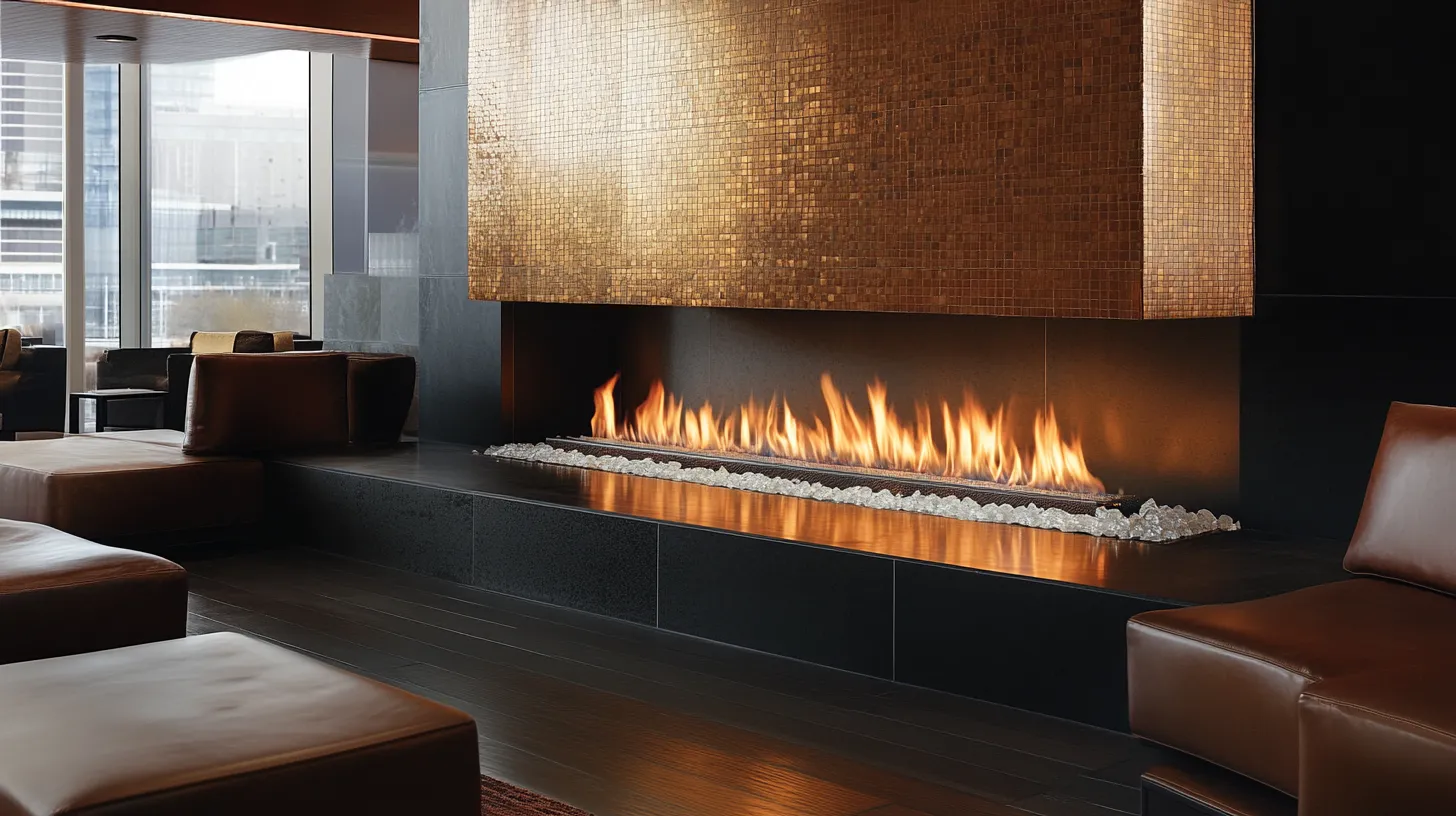
Vent-free systems don’t require external venting but come with specific considerations:
- Must meet strict regulations for indoor air quality
- This can lead to moisture buildup in the room
- Require carbon monoxide detectors for safety
While convenient, vent-free systems need careful monitoring to ensure safe operation.
Safety Measures and Maintenance
Regular upkeep is vital for the safe and efficient operation of your fireplace.
Regular Inspections
Annual professional inspections are crucial:
- Check for blockages in the chimney or venting system
- Identify any leaks or structural issues
- Ensure all components are functioning correctly
These inspections can prevent dangerous situations and extend the life of your fireplace.
Maintenance Routines
Establish a regular maintenance schedule:
- Clean the chimney or venting system as needed
- Replace worn-out components promptly
- Test safety systems, including carbon monoxide detectors
Proper maintenance keeps your fireplace running safely and efficiently.
Emergency Precautions
Be prepared for potential emergencies:
- Learn to recognize signs of poor ventilation, such as soot buildup or unusual odors
- Know the steps to take in case of a gas leak or chimney fire
- Keep fire extinguishers easily accessible
Being prepared can prevent small issues from becoming dangerous situations.
Tips for DIY Installation
If you’re considering a DIY installation, here are some important points to keep in mind.
Tools and Materials
Be prepared with the right equipment:
- Power drills, saws, and other basic tools
- Sealants and fireproof materials
- Proper safety gear, including gloves and eye protection
Having the right tools on hand makes the job easier and safer.
Skill Level Required
Assess your abilities honestly:
- Electric fireplaces typically require basic skills
- Gas fireplaces need more advanced knowledge, including plumbing skills
- Wood-burning fireplaces often involve carpentry and masonry skills
Make sure you’re comfortable with the level of skill required before starting.
Common Pitfalls to Avoid
Be aware of these common mistakes:
- Incorrect measurements lead to poor fit
- Inadequate ventilation causes safety hazards
- Improper sealing allows heat or smoke leakage
Careful planning and attention to detail can help you avoid these issues.
Final Thoughts
As we wrap up our guide to fireplace installation, remember that adding a fireplace to your home is more than just a home improvement project—it’s an investment in comfort and ambiance.
Proper installation is key to safety and enjoyment, whether you choose a traditional wood-burning fireplace, a convenient gas model, or a simple electric unit.
When deciding between professional installation and a do-it-yourself approach, consider your home’s layout, local regulations, and DIY skills.
Regular maintenance and safety checks are crucial for all fireplace types. Are you ready to bring warmth and coziness to your living space?
Start by researching local professionals or gathering the necessary tools for your DIY project.
With the right preparation and knowledge, you’ll soon be enjoying the glow of your new fireplace.
Happy installing!

